Art & Exhibitions
Beloved Street-Fashion Photographer Bill Cunningham Is Getting a Career-Spanning Museum Retrospective
Photographing the city's most fashionable, Bill Cunningham became a New York icon.
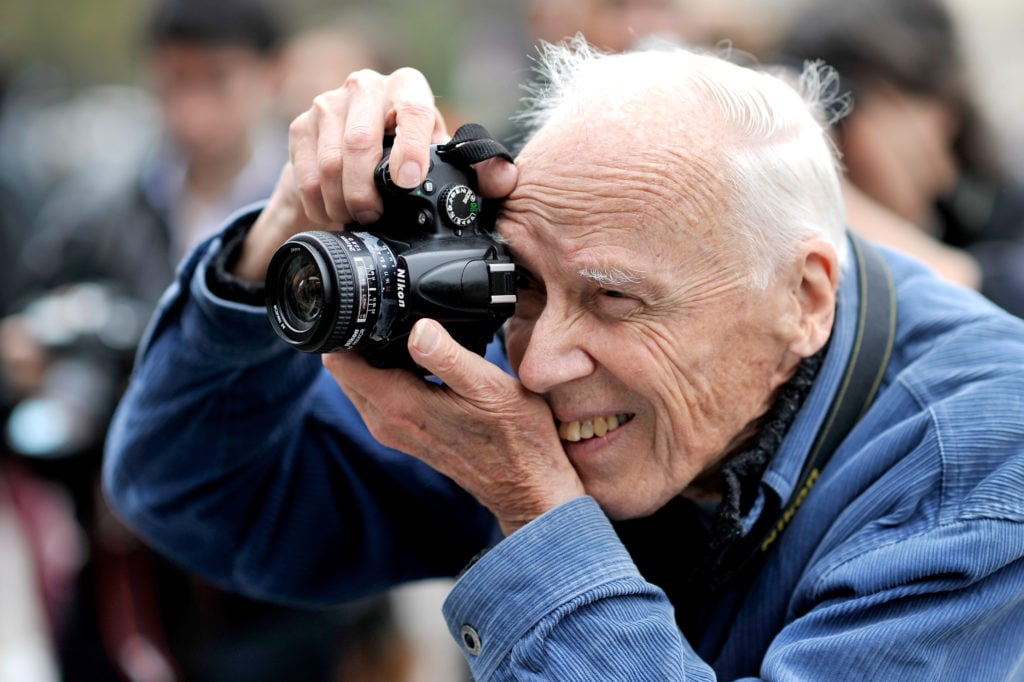
Photographing the city's most fashionable, Bill Cunningham became a New York icon.

Sarah Cascone

Legendary fashion photographer Bill Cunningham, who died in June 2016 at the age of 87, will be the subject of an exhibition at the New-York Historical Society. An influential trend-spotter and style authority, Cunningham documented fashion in the wild, creating a valuable record of how New Yorkers really dressed in the late 20th and early 21st centuries.
With his signature blue jacket, zipping through the city streets on a Biria bicycle up until the last months of his life, Cunningham was ready to photograph fashionable New Yorkers at a moment’s notice. He became, ultimately, a New York icon himself, a fixture at fashion shows and industry parties and upper-crust social events.
The bulk of the exhibition is made up of never-before-seen personal correspondence, ephemera, photographs, and other objects belonging to the late photographer that have been acquired by the museum. His bike, camera, and instantly recognizable French workers’ jacket previously went on view at the museum after their donation in 2017.
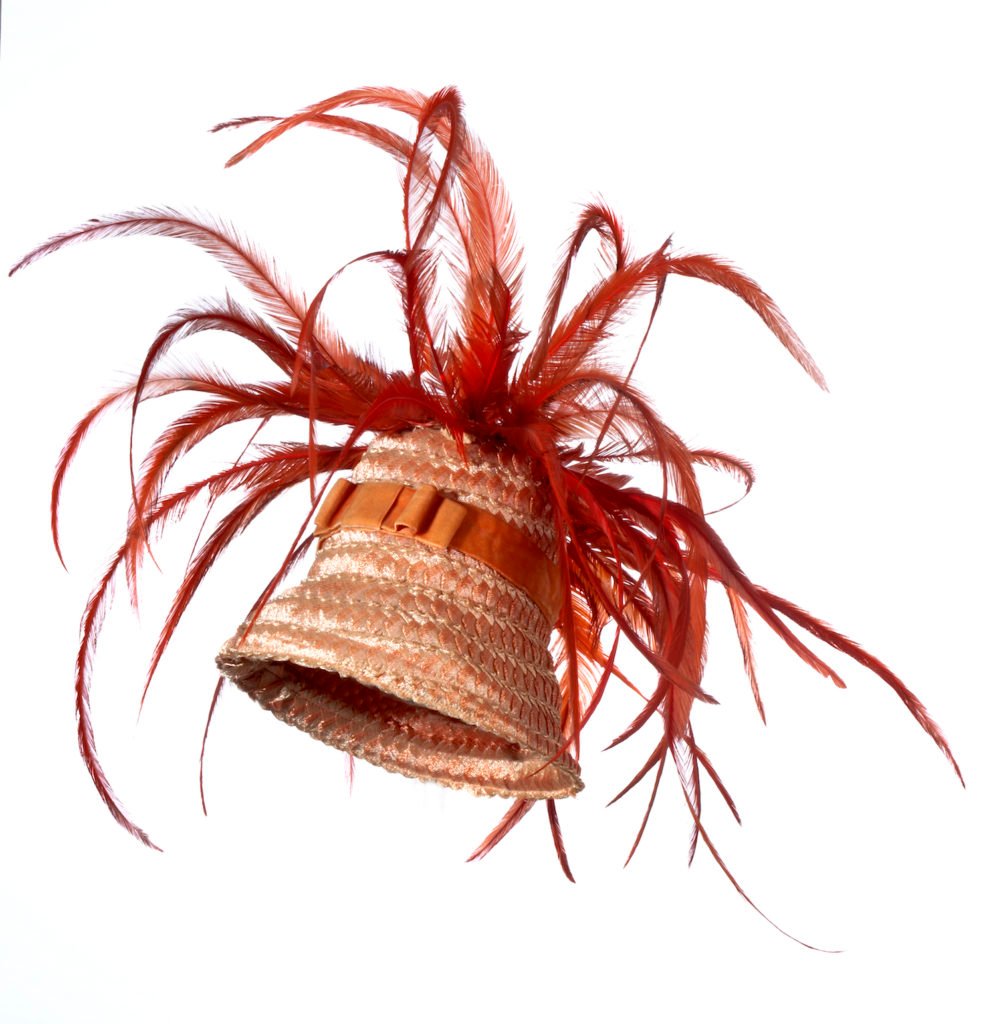
A William J. beach hat made from raffia, velvet, silk, and rooster feathers, (1960). Photo courtesy of the New-York Historical Society. Photo courtesy of the New-York Historical Society.
Perhaps most unexpected are a group of hats Cunningham made for his millinery line, William J. Before his photography career, Cunningham was known for his elegant and whimsical hat designs, favored by the wealthy and fashionable. The New York Times praised his 1958 collection, writing that William J. “had cornered the face-framing market with some of the most extraordinarily pretty cocktail hats ever imagined.” He kept the business until 1962, turning to photography five years later, after meeting photographer David Montgomery while working in London as a fashion reporter for the Chicago Tribune.
Other highlights include Cunningham’s first camera, an Olympus Pen-D, 35mm; hand-made Valentines that he sent to friends; and the official street sign for “Bill Cunningham Corner.” The sign was temporarily installed by Mayor Bill de Blasio at Fifth Avenue and 57th Street, Cunningham’s favorite haunt for spotting street style, in the artist’s honor following his death. The show will also include loans from the photographer’s friends and several of Cunningham’s New York Times columns.
There will also be a selection of Cunningham’s “Facades” photographs, an eight-year-long project completed during the 1960s and ’70s that examined New York social history. The photographs juxtaposed some 1,800 examples of city architecture, both historic and contemporary, with fashion. For the work, Cunningham purchased close to 500 ensembles of meticulously accessorized period clothing at thrift shops, auctions, and street fairs. The resulting images were previously donated to the Historical Society by the artist and shown there in 2014.
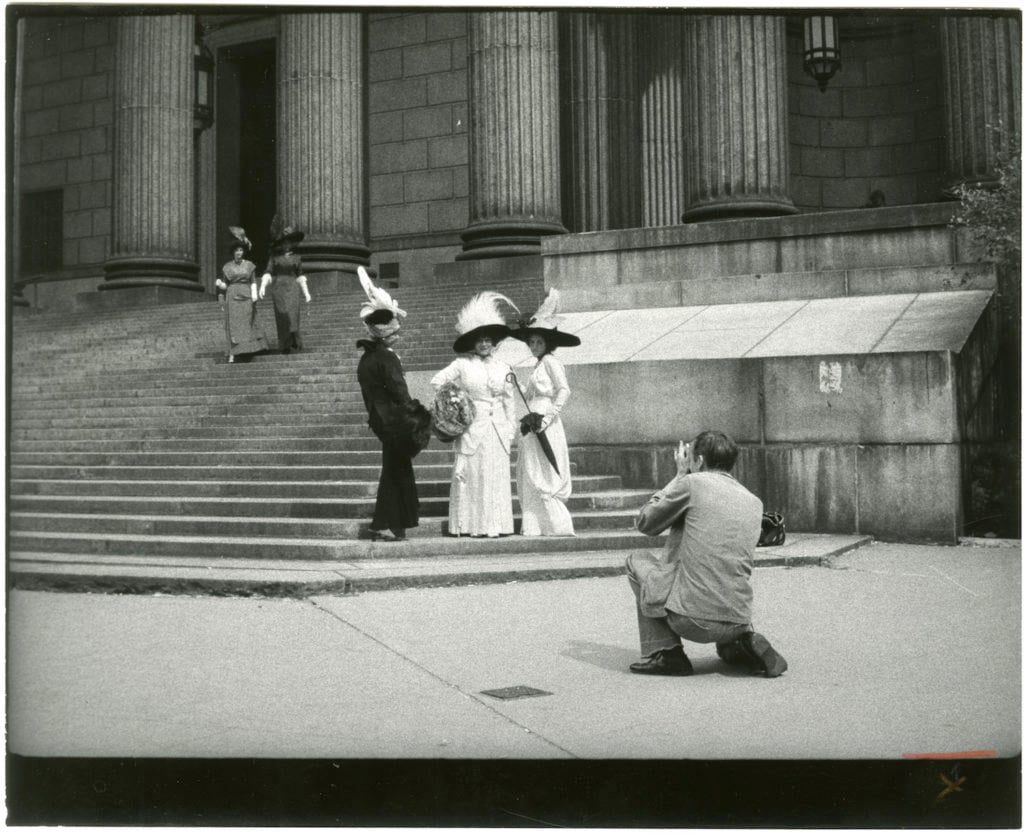
Unidentified photographer, Bill Cunningham Photographing Five Models (circa 1968−76). Photo courtesy of the New-York Historical Society.
“The exhibition is a perfect opportunity for the New-York Historical Society to celebrate Bill Cunningham’s remarkable life and our recent acquisition of his personal effects,” Debra Schmidt Bach, the museum’s curator of decorative arts, told artnet News in an email. “Cunningham was a beloved public figure, who made New Yorkers rethink what is stylish or fashionable. It is exciting to be able to share his personal effects with the public and, through the objects, offer a rare glimpse into the heart and mind of a New York legend.”
The show will be on view from June through September, drawing to a close just in time for New York Fashion Week and the highly anticipated publication of Cunningham’s secret memoir, Fashion Climbing, discovered by his loved ones after his death.
See more objects from the exhibition below.
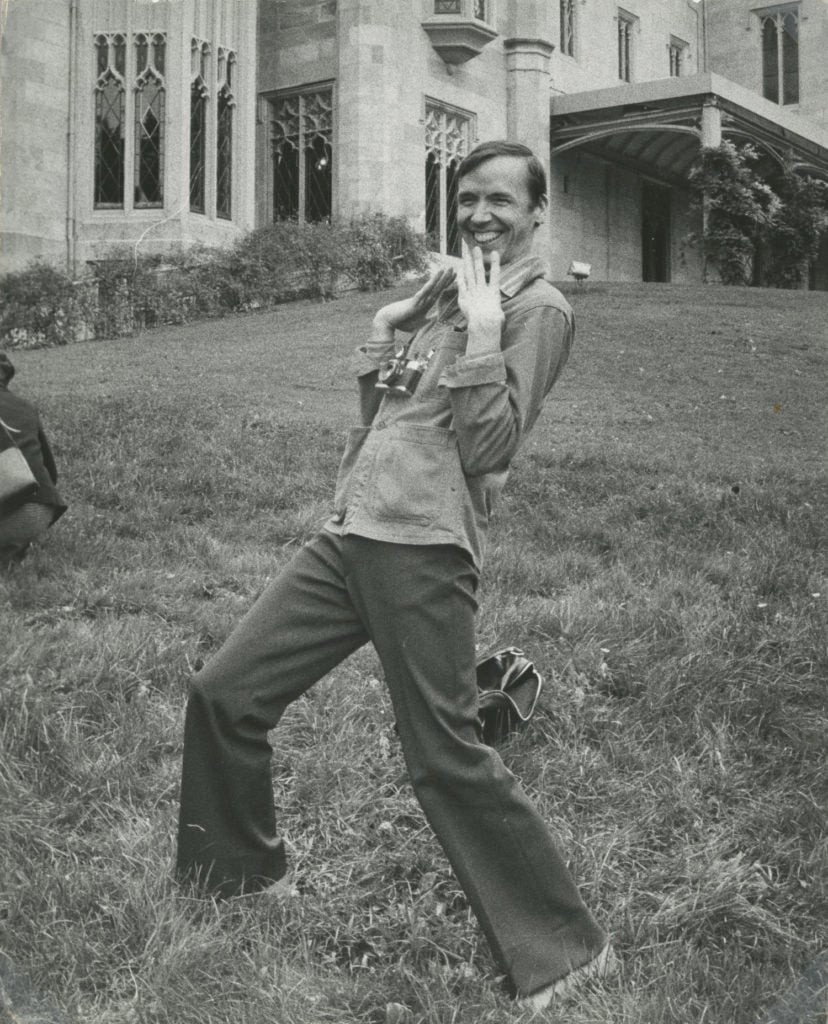
Bill Cunningham with camera, October 1974. Photo courtesy of the New-York Historical Society Library, Melanie Tinnelly Collection of Photographs of or by Bill Cunningham and Toni “Suzette” Cimino.
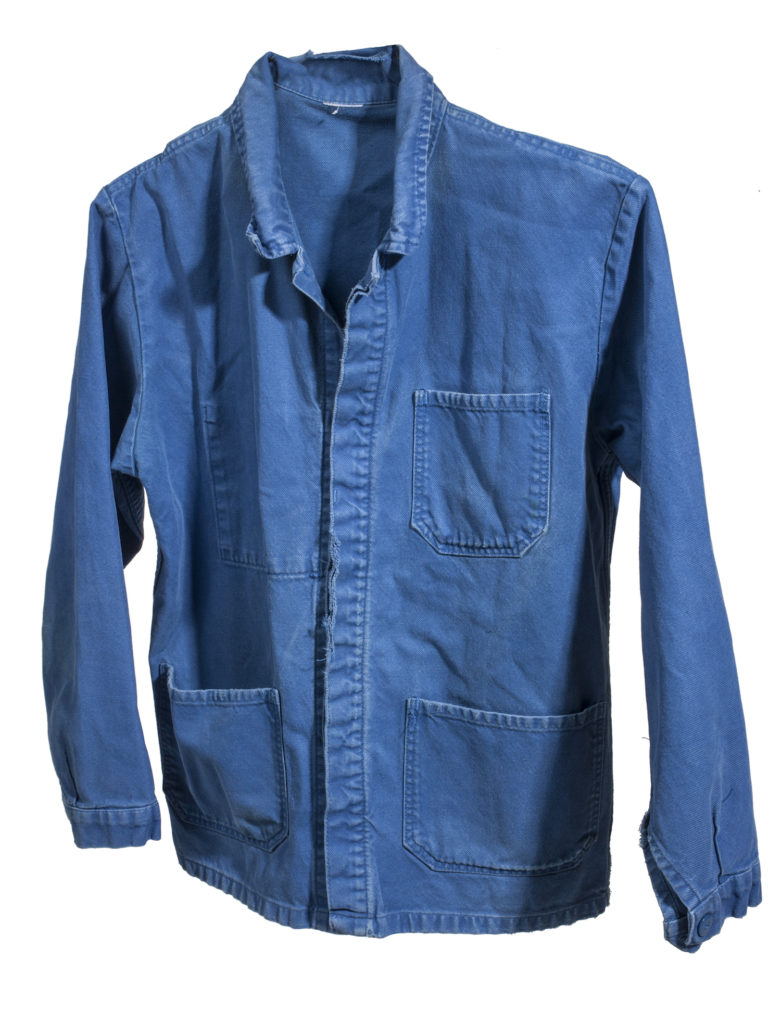
French workman’s jacket worn by Bill Cunningham (circa 2000s). Photo courtesy of the New-York Historical Society.

Bill Cunningham, Toni “Suzette” Cimino in New York City (1974). Photo courtesy of the New-York Historical Society Library, Melanie Tinnelly Collection of Photographs of or by Bill Cunningham and Toni “Suzette” Cimino.
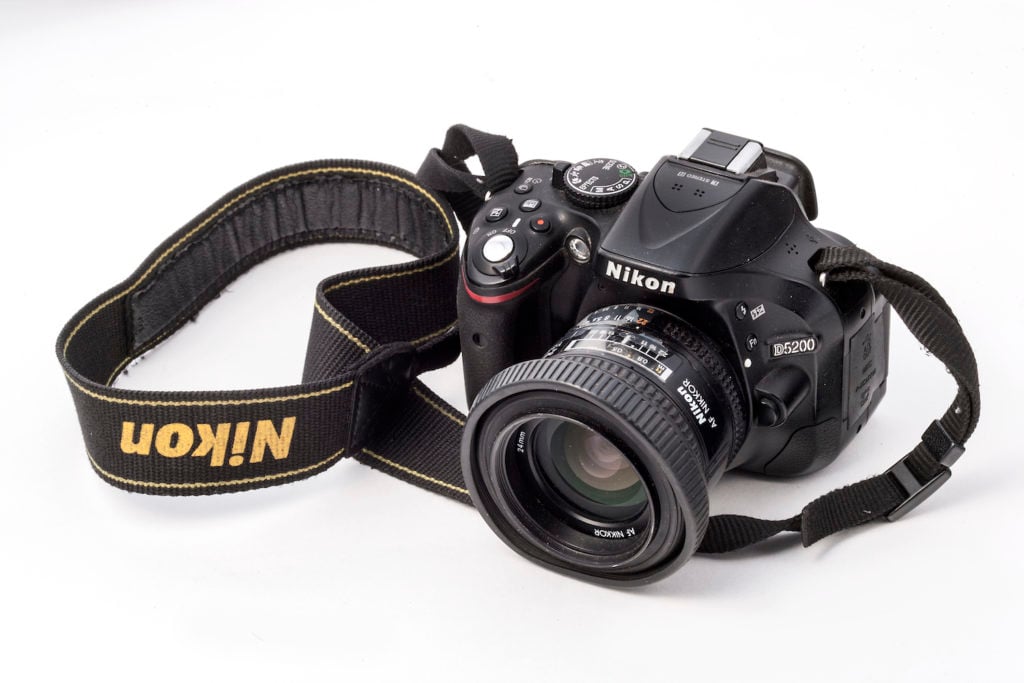
Camera (Nikon Model D5200) with 24 mm lens, used by Bill Cunningham (circa 2012). Photo courtesy of the New-York Historical Society.
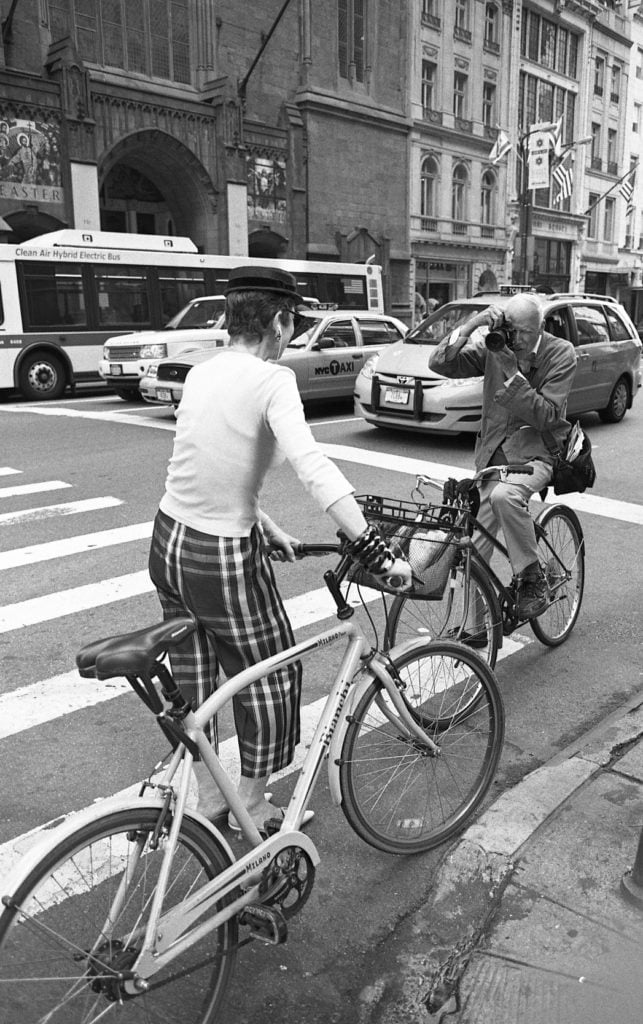
Antonio Alvarez , Bill Cunningham photographing Tziporah Salamon (2011 ). Photo courtesy of Antonio Alvarez.
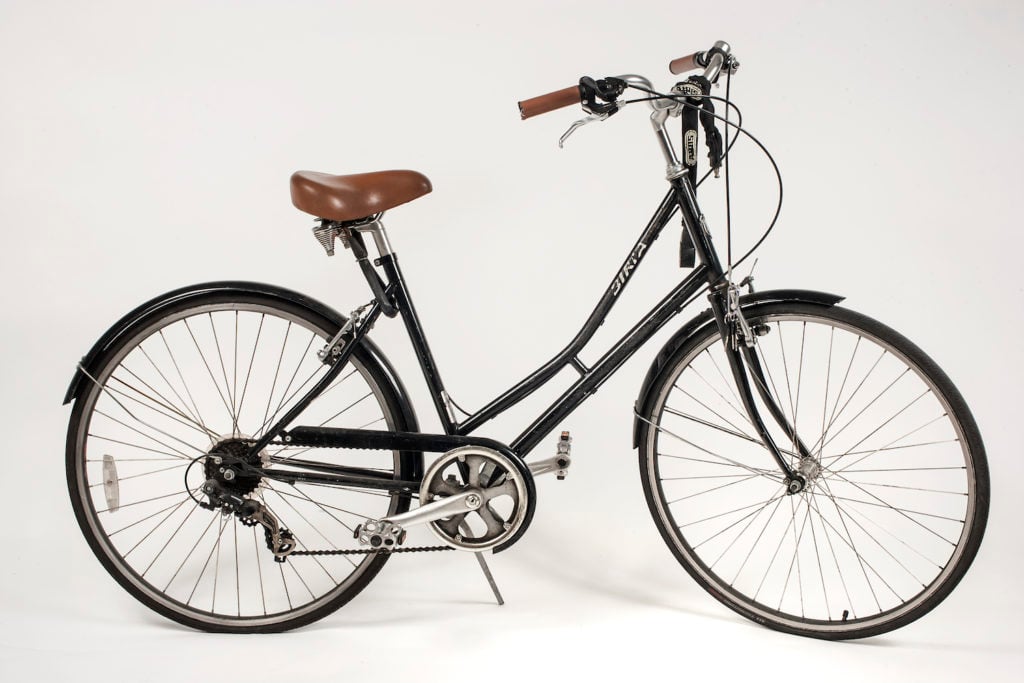
Biria, Germany (est. 1976), one of about 30 bicycles used by Bill Cunningham throughout his career (circa 2002). Photo courtesy of the New-York Historical Society.
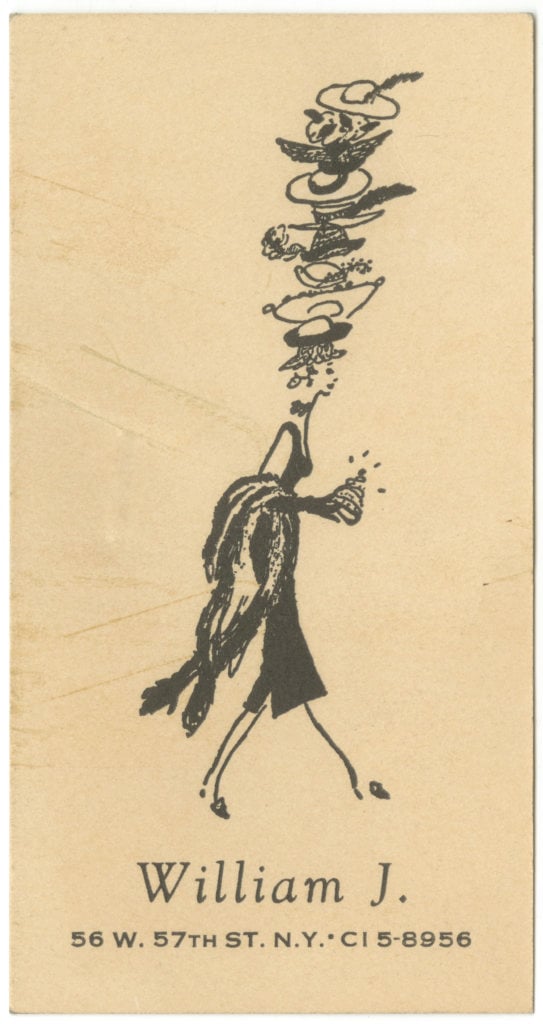
A calling card for Bill Cunningham’s millinery business, William J. (circa 1960). Photo courtesy of the New-York Historical Society.

Label from a William J. hat, (circa 1960). Photo courtesy of the New-York Historical Society.

Bill Cunningham, 181 Madison Avenue Belmont Building (built 1924−25) (circa 1968−76). This photograph from the “Facades” series features his good friend and muse, Editta Sherman. Photo courtesy of the New-York Historical Society.
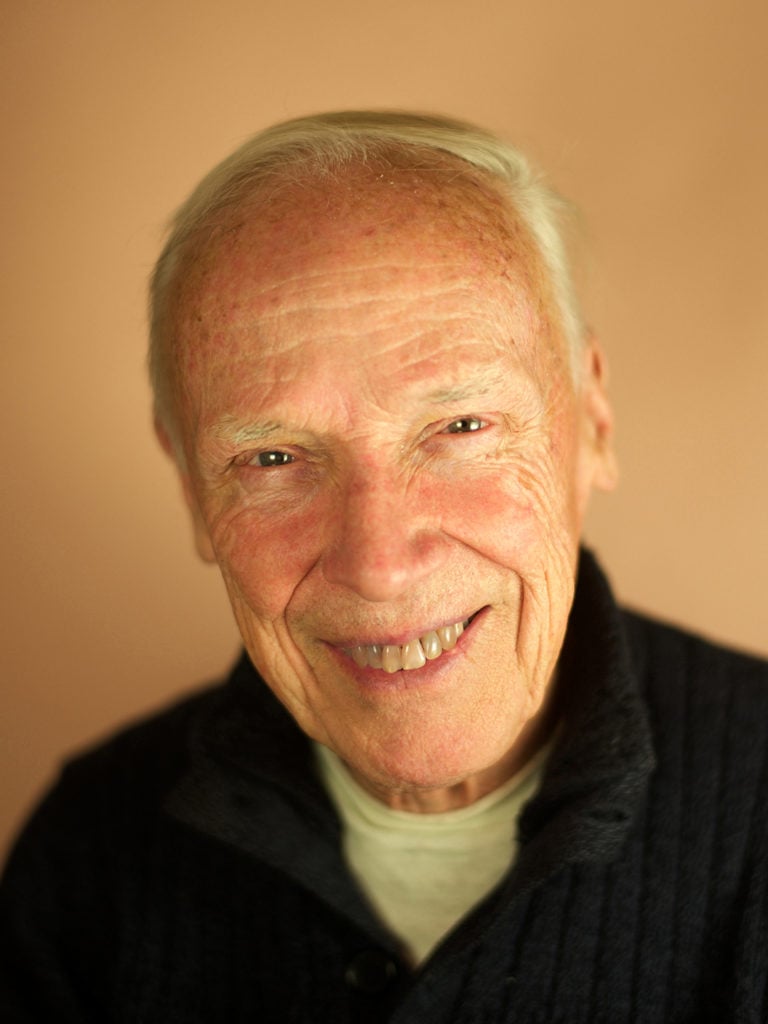
Savinien Caracostea, Bill Cunningham, part of the “Friends” series (2014). Photo courtesy of the New-York Historical Society.
“Celebrating Bill Cunningham” will be on view at the New-York Historical Society, 170 Central Park West at Richard Gilder Way (West 77th Street), June 8–September 9, 2018.